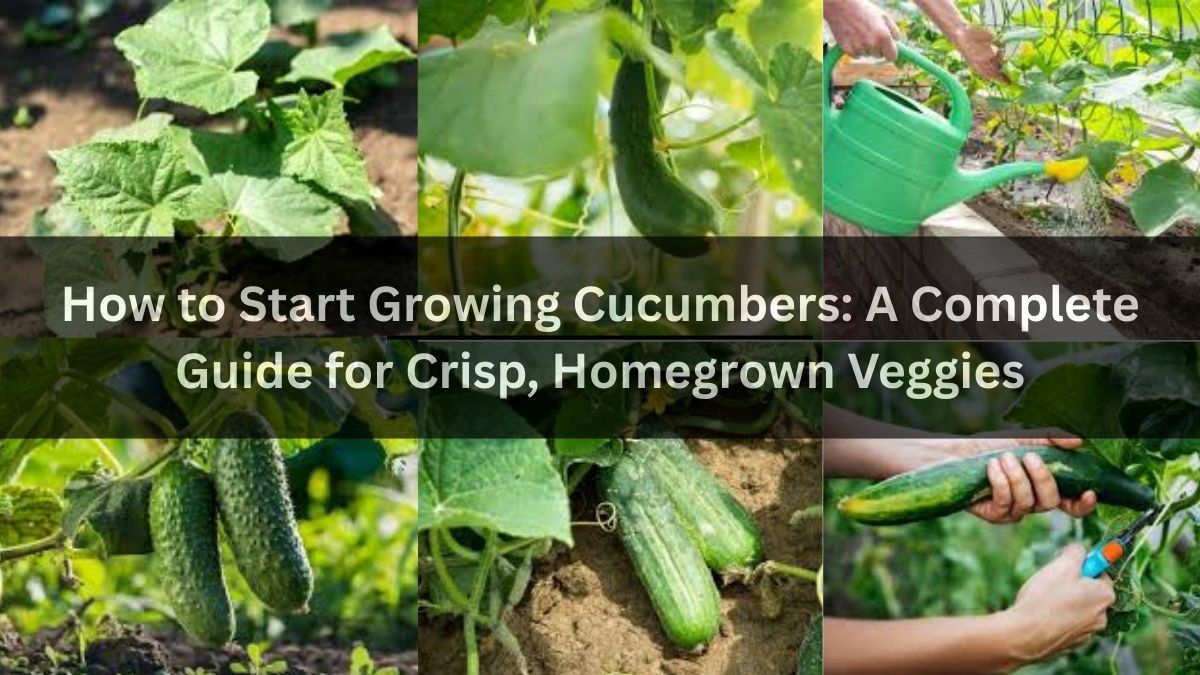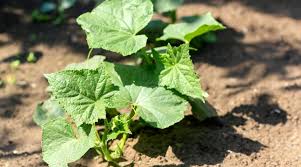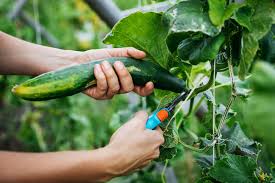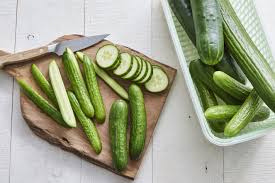There’s something uniquely satisfying about picking a crisp, cool cucumber straight from your garden. Whether you love them in salads, pickled in jars, or sliced into your summer drinks, homegrown cucumbers deliver unmatched flavor and freshness.
Even better, cucumbers are relatively easy to cultivate, making them perfect for both gardening beginners and seasoned green thumbs. This comprehensive guide will walk you through everything you need to know—from selecting the right variety to planting, care, and harvesting.

Quick Summary Table
| Topic | Details |
|---|---|
| Best For | Beginners and experienced gardeners |
| Planting Season | After the last frost (soil above 18°C or 65°F) |
| Growing Time | 50–70 days (depending on variety) |
| Sun Requirements | Full sun (6–8 hours daily) |
| Soil Needs | Well-drained, fertile, slightly acidic to neutral (pH 6.0–7.0) |
| Watering | Consistent moisture, deep watering weekly |
| Space Requirements | Vines: 36–60 inches apart; Bush: 12–18 inches apart |
| Harvest Time | Slicing: 6–8 inches long; Pickling: 2–4 inches long |
| Official Resource | Department of Agriculture, Forestry and Fisheries – South Africa |
Why You Should Grow Cucumbers at Home
Before you get started, here are some compelling reasons to add cucumbers to your garden:
-
Superior Freshness: Garden-grown cucumbers are juicier, crisper, and more flavorful than store-bought.
-
Cost Efficiency: One plant can yield dozens of cucumbers, saving you money on groceries.
-
Diverse Varieties: Grow heirloom or specialty varieties rarely found in stores.
-
Chemical-Free: Control soil amendments and avoid harmful pesticides.
-
Mental and Physical Health: Gardening promotes outdoor activity and reduces stress.
Choosing the Right Type of Cucumber
Cucumbers come in various forms, but most fall into two main categories:
1. Slicing Cucumbers
-
Grown for fresh consumption.
-
Larger and smoother-skinned.
-
Popular Varieties: Marketmore, Straight Eight, Diva
2. Pickling Cucumbers
-
Ideal for making pickles.
-
Shorter and bumpier.
-
Popular Varieties: Boston Pickling, National Pickling, Bush Pickle
3. Specialty Cucumbers
-
Lemon Cucumbers: Round, yellow, citrus-like flavor.
-
Armenian Cucumbers: Long, ribbed, and heat-tolerant.
Select a type based on your space, taste preference, and climate.
When to Plant Cucumbers

Cucumbers thrive in warm soil and sunshine. Timing is key:
-
Outdoors: Plant seeds 2 weeks after the last expected frost.
-
Indoors: In short-season areas, start seeds 3–4 weeks early and transplant after the danger of frost has passed.
Seeds vs. Transplants: What’s Better?
Direct Seeding
-
Most gardeners prefer this method.
-
Seeds germinate within 3–10 days in warm soil.
-
Less root disturbance.
Transplanting
-
Suitable only for areas with short growing seasons.
-
Start seeds in biodegradable pots to avoid shocking the roots during transplanting.
Preparing the Planting Site
Cucumbers grow best in:
-
Full Sun: At least 6–8 hours of sunlight daily.
-
Rich Soil: Loose, fertile, and well-drained with a pH between 6.0 and 7.0.
-
Shelter: Protection from heavy winds.
Soil Improvement Tips
-
Mix in aged compost or well-rotted manure.
-
Use a balanced organic fertilizer before planting.
How to Plant Cucumbers

Spacing Guidelines
-
Bush Varieties: 12–18 inches apart, rows 3 feet apart.
-
Vining Varieties: 36–60 inches apart or train up a trellis.
Planting Depth
-
Sow seeds 1 inch deep.
-
Thin seedlings to proper spacing after they sprout.
Pro Tip: Use vertical trellising for vining types. This saves space, improves airflow, and reduces fruit rot.
Caring for Cucumber Plants
Watering
-
Provide deep, consistent watering once or twice a week.
-
Water at the base to avoid wetting foliage.
-
Mulch helps retain moisture and suppress weeds.
Fertilizing
-
Start with an all-purpose fertilizer.
-
Side-dress with compost or liquid fertilizer every 3–4 weeks.
-
Avoid excess nitrogen, which leads to lush leaves but fewer fruits.
Trellising
-
Keeps fruits straight and off the ground.
-
Promotes air circulation.
-
Use tomato cages, fences, or A-frame supports.
Pollination Tips
-
Most cucumbers need insect pollination.
-
Attract pollinators by planting marigolds, zinnias, or nasturtiums nearby.
-
Hand-pollinate with a small brush if fruit set is poor.
Common Cucumber Problems and Solutions
| Problem | Cause | Solution |
|---|---|---|
| Yellow leaves | Overwatering or nutrient deficiency | Adjust watering and apply balanced fertilizer |
| Powdery mildew | Fungal infection | Improve airflow and use organic fungicides |
| Cucumber beetles | Pest infestation | Use row covers early, hand-pick beetles |
| Bitter or misshapen fruit | Heat stress, inconsistent watering | Mulch and maintain regular watering |
| Poor fruit set | Lack of pollination | Encourage pollinators or hand-pollinate |
Harvesting Cucumbers

-
Harvest regularly for continuous production.
-
Use sharp scissors or gently twist to remove fruit.
When to Harvest
-
Slicing Varieties: 6–8 inches long, firm, dark green.
-
Pickling Varieties: 2–4 inches for best quality.
Storing and Using Your Cucumbers

Short-Term Storage
-
Refrigerate fresh cucumbers for up to 1 week.
Long-Term Storage Options
-
Make quick refrigerator pickles.
-
Can or ferment cucumbers for shelf-stable storage.
-
Use in salads, smoothies, sandwiches, or infused water.
Tips for a Bountiful Cucumber Harvest
-
Rotate crops each year to avoid soil-borne diseases.
-
Avoid planting near potatoes or aromatic herbs like sage.
-
Companion plant with radishes, beans, or nasturtiums.
-
Act quickly if you see signs of pests or disease.
Frequently Asked Questions (FAQs)
1. How long does it take cucumbers to grow?
Most varieties mature within 50–70 days after planting.
2. Can cucumbers be grown in containers?
Yes. Choose bush varieties and use large containers (at least 5 gallons) with a trellis.
3. What causes bitter cucumbers?
Bitter flavors result from stress—usually irregular watering or high temperatures.
4. Do I need to hand-pollinate cucumbers?
Usually not, but hand-pollination may be necessary if pollinators are scarce.
5. What’s the best fertilizer for cucumbers?
Use a balanced (10-10-10) organic fertilizer or compost. Avoid excessive nitrogen.
Conclusion
Growing cucumbers at home is rewarding, affordable, and surprisingly simple. With a bit of sunlight, rich soil, and regular care, you can enjoy crisp, flavorful cucumbers from your own backyard. Whether fresh, pickled, or blended into drinks, your harvest will be a delicious highlight of the gardening season.
For more gardening resources, visit the South African Department of Agriculture.
Let this season be the one you grow your best cucumbers ever!
Click here to know more